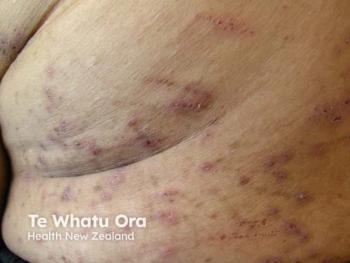
From Pixels to Precision: How Deep Neural Networks Are Enhancing Nail Disease Care
Key Takeaways
- Advanced machine learning and clinical imaging can automate onychomycosis detection and progression assessment, improving diagnostic accuracy and treatment monitoring.
- The ScarletredVision system and deep neural networks achieved precise nail segmentation and infection assessment, supporting clinical decision-making.
This study demonstrates the use of AI-driven image analysis, leveraging the ScarletredVision app and machine learning, to diagnose and assess onychomycosis.
By integrating advanced machine learning algorithms with clinical imaging technology, clinicians and researchers may be able to effectively automate the detection and progression assessment of onychomycosis, according to a
By employing the ScarletredVision system and deep neural network analysis, researchers achieved accurate nail segmentation and infection assessment.
Background and Methods
Despite its widespread nature, onychomycosis often goes underdiagnosed due to its gradual progression and reliance on conventional diagnostic techniques, such as microscopy and fungal cultures, which can be time-intensive and prone to errors.2
Authors of the present study aimed to address these challenges by exploring artificial intelligence (AI)-powered image analysis to enhance diagnostic accuracy and treatment monitoring.
The study utilized a dataset of 1,687 clinical images from 440 participants enrolled in a multicenter, double-blinded, phase 2 trial of a topical treatment for distal subungual onychomycosis. Participants exhibited clinically confirmed onychomycosis with 25% to 60% nail involvement. Additional cases of other onychomycosis subtypes, including superficial white and proximal subungual forms, were included to broaden applicability.
Images were captured using the ScarletredVision system, which integrates smartphone-based imaging with automated color calibration through a skin patch. The images were converted into the CIE-Lab color space to facilitate spectral analysis.
Researchers utilized deep learning algorithms to segment nail regions and classify healthy versus infected areas. They also assessed nail growth rates and their relationship to infection severity, comparing data against established benchmarks of healthy nail growth, or 1.62 mm per month.
Findings
The AI-powered model achieved high precision in delineating nail boundaries, even in complex cases with significant discoloration or deformation. Post-processing techniques enhanced the accuracy by reducing noise and irregularities in the segmentation output.
The classification algorithm effectively distinguished infected regions within the nail, demonstrating its capacity to support clinical decision-making. By dividing the nail into grids and analyzing texture and color differences, the model provided granular assessments of infection spread.
The system quantified the progression of onychomycosis by correlating infection dynamics with nail growth. The ScarletredVision system’s temporal tracking allowed precise monitoring of treatment efficacy.
Conclusions
While the study underscores the potential of AI in onychomycosis management, several limitations remain. The dataset relied heavily on images captured with the ScarletredVision system, potentially limiting generalizability. Future studies should incorporate images from diverse imaging devices, including dermatoscopes and onychoscopic tools.
Additionally, the initial model training required extensive manual input, which could be resource-intensive for broader clinical adoption. Expanding the model to include other nail pathologies may improve its utility in dermatology practices.
"Incorporating images of additional nail conditions in the future could further enhance the AI's accuracy, paving the way for novel diagnostic applications," wrote study authors Agostini et al.
References
- Agostini C, Ranjan R, Molnarova M, et al. AI powered detection and assessment of onychomycosis: a spotlight on yellow and deep learning. J Eur Acad Dermatol Venereol. November 25, 2024.
https://doi.org/10.1002/jvc2.577 - Elewski BE. Onychomycosis: pathogenesis, diagnosis, and management. Clin Microbiol Rev. 1998;11(3):415-429.
doi:10.1128/CMR.11.3.415
Newsletter
Like what you’re reading? Subscribe to Dermatology Times for weekly updates on therapies, innovations, and real-world practice tips.


















